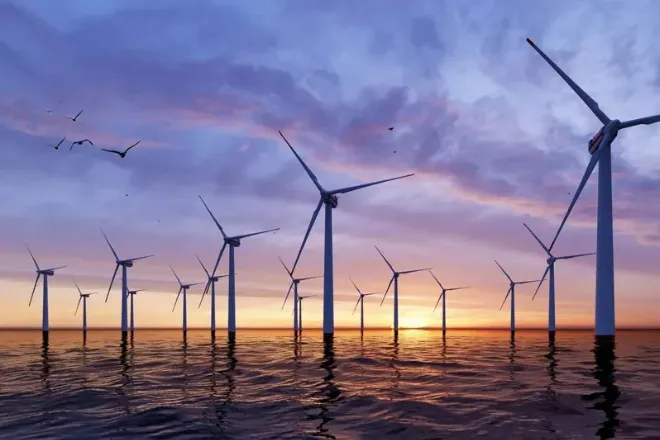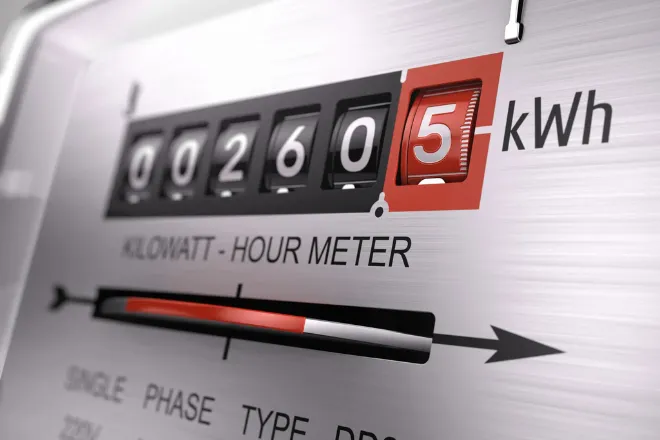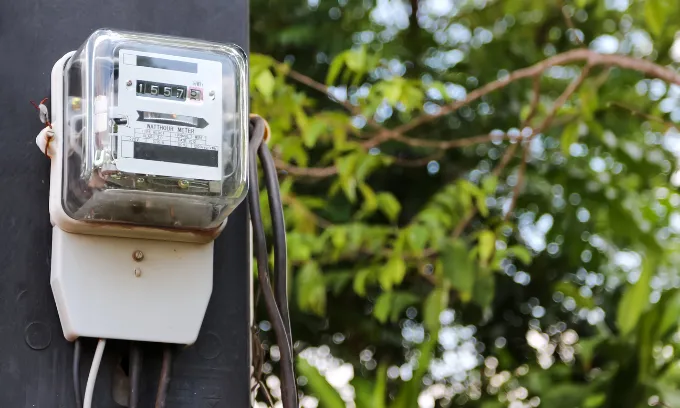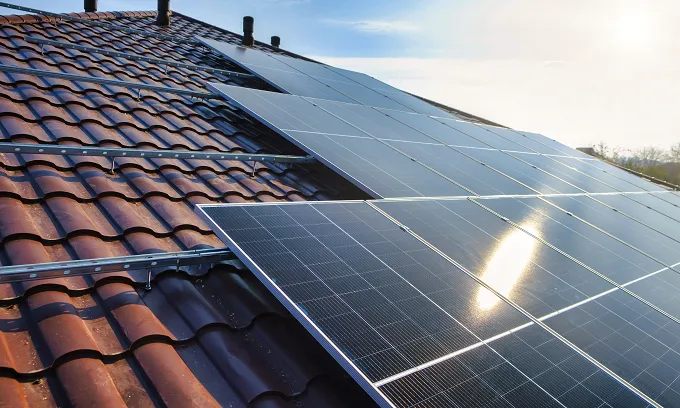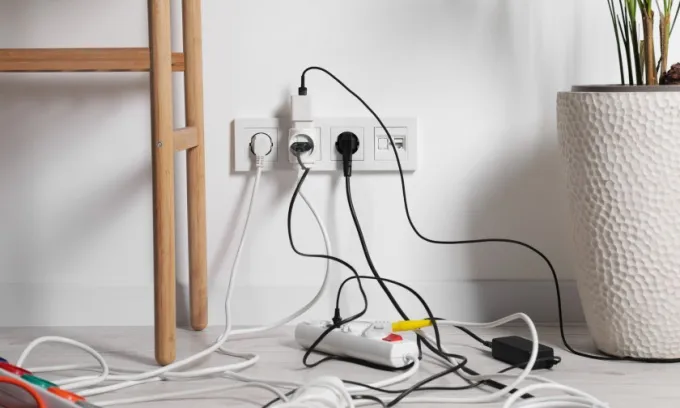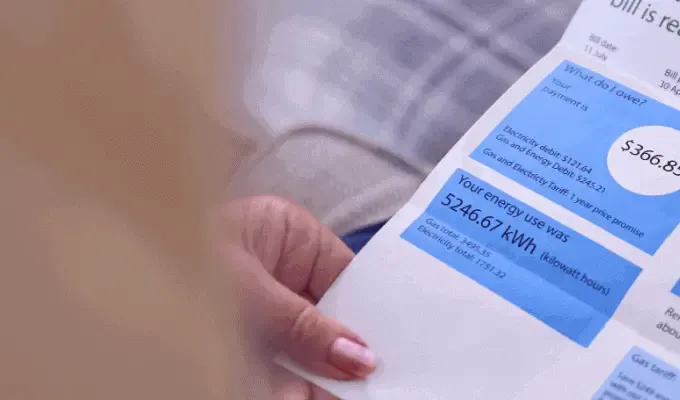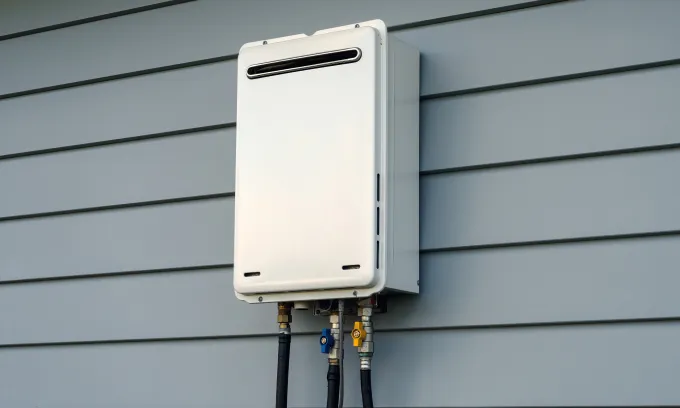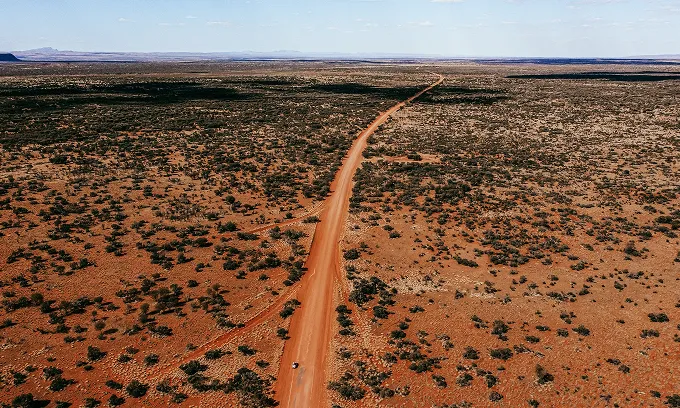How energy in SA works
The South Australian (SA) energy market offers two types of energy — electricity and gas.
If you want electricity and/or gas supplied to your home, you’ll need to pick an energy plan from a provider. Energy providers are businesses that buy and resell energy from the wholesale market. This energy is resold in the form of plans with different rates to customers like you.
Energy providers do the selling and energy distributors distribute energy to Aussie homes. Distributors also manage and maintain the grid infrastructure’s health (e.g. pipelines, utility poles).
The entire SA energy market is fully deregulated. That means energy providers can freely enter and exit the market to compete, selling plans with prices and conditions set on their terms.
With over 20 electricity providers and nine gas providers in SA, customers are spoilt for choice. The next challenge is choosing an energy plan (or energy plans) that’s best for you.
This guide explores the nuances of the SA energy market, including how to compare electricity plans in Adelaide.
Electricity in SA explained
Electricity distributors in SA
In SA, the primary electricity distributor is SA Power Networks.
While some companies other than SA Power Networks supply electricity distribution systems to rural regions, most South Australians will be served by SA Power Networks.
Generally, you will rarely need to contact your distributor, unless there’s a power outage.
Electricity plans in SA
There are two types of electricity plans in SA — ‘market offers’ and ‘standing offers’.
Either plan measures how much electricity you use in kilowatt hours (kWh).
Their estimated annual prices are based on a general annual usage that’s set by the Australian Energy Regulator (AER).
In SA, the annual electricity use estimate in SA Power Networks is 4,000 kWh a year.
Market offers
Market offers are plans with rates, terms and conditions set by an energy provider.
Things to note:
- You can only be on a market offer if you sign up for one.
- Market offers have specified contract length (usually 12 months) before expiring.
- Many market offer plans are ‘variable rate’, meaning their rates can change frequently before they expire.
- A fixed rate plan locks in their rates for the contract duration, but this feature isn’t common.
Standing offer
Standing offers, also called the default market offer (DMO) in south east SA, NSW and QLD, follow the SA reference price set by the AER every July 1st.
The DMO is a price cap, shielding customers unengaged with the energy market from overpaying for electricity. It’s also a ‘point of reference’ for comparing market offers against. Any price differences are shown as a percentage (%).
Things to note:
- If you are on a standing offer, you are likely paying the most for your energy. We suggest switching to a new plan to save hundreds of dollars.
- Sometimes, market offers can cost more than standing offers, but this doesn't happen often.
- Standing offers do not have an end date, so they don't expire.
- Standing offers do not come with any discounts.
The cheapest electricity plans in SA
Here’s a handful of the cheapest electricity market offers on our database in SA.
Provider | Plan name | Est. annual cost (inc. all discounts) | Est. annual cost (ex. conditional discounts) | Reference price comparison (Basic Plan Information) |
|---|---|---|---|---|
ENGIE | SA _ENGIE Perks Elec | $1,910 | $1,910 | 17% less |
Kogan | Kogan Energy for current FIRST members | $1,918 | $2,018 | 12% less |
Momentum Energy | Warm Welcome | $1,970 | $1,970 | 14% less |
Lumo Energy | Lumo Basic | $1,995 | $1,995 | 13% less |
Electricity prices and rates in SA
Every electricity plan consists of two charges — ‘supply charges’ and ‘usage charges’:
- Supply charges: A daily fixed cost you pay (in c/day) to remain connected to the grid.
- Usage charges: A variable cost (in c/kWh) for every kWh of electricity you consume.
Electricity plans also come in tariff types, which have different pricing structures:
Tariff name | Description | Do you need a smart |
|---|---|---|
Single rate | A flat rate throughout the | No |
Demand tariff | Supply and usage charges, | Yes |
Controlled load | Power-intensive appliances | Yes |
On market offers, you can expect to see discounts applicable during a plan’s contract length or benefit period, such as:
- Conditional discounts: A discount if you meet certain conditions. If you don't satisfy them, you won’t qualify for the discount.
- Dual fuel discount: Some providers offer a ‘dual fuel discount’ for buying both electricity and gas. But you might save more by buying them separately from different providers. Always check which option saves you more.
- Guaranteed discounts: A discount without any conditions to meet. It's usually advertised as a percentage (%) off a plan’s annual estimated price.
- Reward programs: Some plans give you points for paying your power bills via a rewards program. You can use these points for rewards like theme park or movie tickets.
All of this pricing information is clearly listed on a plan’s energy fact sheet, which is called a Basic Product Information Sheet (BPID) in SA, NSW and QLD.
On the Canstar’s electricity comparison in SA platform, you can access a plan’s BPID by clicking on the ‘Basic Plan Information’ prompt on the results page.
How to find the best energy plans in SA
Choosing the right electricity plan requires a deeper understanding of how your household uses electricity.
How much electricity you use
As a rule of thumb, electricity plans with high supply charges will have lower usage charges, and vice versa. Knowing when and how you use electricity will determine which plan type saves you more money:
- If you don’t use much electricity, a plan with lower supply charges is cheaper.
- If you use a lot of electricity, a plan with lower usage charges is cheaper.
When you use the most electricity
Knowing the hours you consume the most electricity will inform you of the tariff type that’s cheaper for your situation.
- If you use more electricity during peak hours, a single rate tariff will be cheaper than a demand tariff.
- If you use more electricity during off-peak hours, a demand tariff may be cheaper.
- If you have an energy-hungry appliance (e.g. a hot water system), a CL tariff could save you more, as long as you’re happy with limiting your appliance's operating hours.
Be wary of hidden fees
Always look at a BPID’s fine print — energy plans may hide other hidden fees you aren’t aware of (e.g. disconnection or connection fees).
Don’t look at discounts alone
Be careful with generous discounts on gas plans. They can mislead by hiding expensive usage and supply charges.
Gas in SA explained
Gas distributors in SA
In SA, gas is supplied mainly by one distributor: Australian Gas Networks (AGN).
In regional areas, there may be other companies in charge of remote gas distribution.
There are only a handful of situations where you may need to contact AGN:
- To establish a new gas connection at home.
- If there is a gas outage.
- If you need to submit a manual gas meter read you've done yourself.
Gas plans in SA
Gas plans can be separated into two categories — ‘standard’ and ‘market.’
Canstar calculates estimated annual gas prices based on the average usage advertised by a selection of providers. Gas use is also measured in megajoules (MJ) instead of kWh.
Market contracts
Market contracts are retailer-set with attractive rates and discounts to entice new customers.
Things to note:
- Market contracts come with either fixed or variable usage rates.
- Market contracts can be priced higher than standing contracts, but this doesn’t happen often.
- Variable usage rates can change regularly before a plan expires.
- Market contracts usually have a contract length of 12 months before expiring — you should compare variable plan pricing frequently.
Standing contracts
Standing contracts are regulated by the SA government, making sure Aussies not on a market contract pay a fair price for gas.
Things to note:
- Customers who haven’t changed gas retailers in a long time will likely be on a standard contract — switching to a market contract can save you more money.
- Standing contracts usually reflect the most that a gas provider will charge you for your actual gas use.
- Standing contracts do not have any discounts.
- Standing contracts don’t have a set expiry, so you can be on one indefinitely.
The cheapest gas plans in SA
Here’s a handful of the cheapest gas market contracts on our database in SA.
Provider | Plan name | Est. annual cost (inc. all discounts) | Est. annual cost (ex. conditional discounts) | Basic Plan Information |
|---|---|---|---|---|
Alinta Energy | HomeDeal Essential - Gas | $1,047 | $1,047 | |
Lumo Energy | Lumo Basic | $1,095 | $1,095 | |
AGL | Smart Saver | $1,100 | $1,100 | |
Red Energy | Living Energy Saver | $1,140 | $1,140 |
Gas prices and rates in SA
Similar to electricity, all gas plans comprise two charges — ‘supply charges’ and ‘usage charges.’
- Supply charges: A fixed cost (in c/day) you must pay to maintain your gas connection.
- Usage charges: A variable cost (in c/MJ) for every MJ of gas you use at home.
Like gas plans in most states, usage charges can come in two tariffs (or pricing structures):
- Single rate tariff: A flat rate for gas, regardless of when gas is used.
- Block rate tariff: Gas usage is charged based on the quantity of gas used, broken down into ‘blocks’. For example, the first block of 20MJ used may be charged 3c/MJ, 2.7c/MJ for the next 20MJ of usage, and 2.5c/MJ for the remainder.
Market contracts, like electricity market offers, come with similar discounts and incentives.
All the gas pricing information discussed can be found on a plan’s gas fact sheet. In our energy comparison platform, they can be accessed directly by clicking on the ‘Basic Plan Information’ prompt below each plan name.
How to find the best gas plans in SA
Knowing how you use gas
The volume of gas you use will determine whether a plan with lower supply charges or usage charges is cheaper for you:
- If you don’t use gas regularly, a plan with lower supply charges is cheaper.
- If you use gas frequently, a plan with lower usage charges is cheaper.
The same goes for gas tariffs:
- If your home uses little gas, a single rate tariff is the more affordable option.
- If your home uses a lot of gas, a block rate tariff may be cheaper.
Understanding gas discounts and hidden fees
Like electricity plans, discounts and hidden fees work the same way.
Every plan could be hiding fees or charges in the fine print. More importantly, a generous discount at face value may be misleading. For instance, plans with higher discounts could also come attached with higher base rates.
Solar in SA explained
Unlike electricity and gas, you don’t pay a provider to receive solar energy. In fact, the opposite happens (through a feed in tariff). Here’s how it actually works.
Solar feed in tariffs in SA
A solar feed in tariff (FiT) pays you with a bill credit (in c/kWh) for any excess energy exported from your rooftop solar to the power grid. Solar FiTs come attached to some energy plans, depending on the provider.
In SA alone, there are over 430,000 solar systems installed.
Minimum solar feed in tariffs in SA
In SA, there is no longer a set minimum solar feed-in tariff — that’s why it pays to shop around for more competitive FiTs from different providers.
Premium solar feed in tariffs in SA
Customers with eligible solar systems connected before September 30, 2011 may receive a premium feed-in tariff set by SA Power Networks.
For a deeper dive into solar FiTs in SA, you can visit our guide on the best solar feed-in tariffs in SA.
Choosing the right SA solar feed in tariff
Generous FiTs may be tempting, but there are other factors to consider:
- A higher solar FiT could translate into higher usage and supply charges — you may end up paying more than you’re saving from your FiT’s credit.
- Some solar FiTs offer higher rates for a capped amount of exported solar before decreasing to a lower rate each day (e.g. 11c/kWh for the first 10kWh per day, 6c/kWh after).
- Before installing a solar system, calculate the time it will take for the savings generated from your FiT to offset its upfront cost.
How to switch energy plans in SA
Now that you understand the SA energy market, it’s time to switch providers.
Step 1: Check your eligibility to switch plans
Homeowners and renters shouldn’t face any hurdles when it comes to switching. However, there are a few notable exceptions:
Electricity
- Embedded networks: If you live in an apartment building or multi-residence, you could be living in an embedded network, which means your electricity comes from a site owner, who buys electricity from a provider to resell to tenants/homeowners like you. While embedded network customers reserve the right to switch plans and providers, the process is far more complex. We recommend speaking to your site owner or body corporate.
- Your landlord pays your bills: If your rent covers your power bills, you’re typically unable to switch providers — this is especially true if your landlord’s name is on your power bills. This arrangement can also be found on your original rental agreement or lease.
Gas
- Check if you have a gas connection: If you’ve never had gas supplied to your home before, you’ll need to make sure your home has a gas connection. Contact the gas distributor in your area to organise one on your behalf — this will attract a fee.
- If your home is not located close to a gas mains: If your home doesn’t have gas mains nearby, liquefied petroleum gas (LPG) is a possible alternative — just be mindful that natural gas-powered appliances cannot use LPG interchangeably.
Step 2: Check your current bill
Refer to your latest energy bill, weighing other plans against the rates and discounts on your current plan.
Under the ‘energy usage summary’ section on your energy bill, you can use your estimated electricity/gas usage throughout the year as an estimate of future usage.
If you’d like to learn more than the basics of power bills, you can visit our guide on reading energy bills.
Step 3: Compare energy plans based on price
Using Canstar’s comparison platform, you can sort plans available in your postcode by price.
You can also filter all results for your specific needs:
- Bill details
- Billing periods
The results will provide you with an estimated annual cost and direct access to a plan’s fact sheet.
Step 4: Check tariff type, rates and contract terms
Understanding your household energy use will reveal how you can benefit from different plans, tariff types and solar FiTs.
Never commit to any plan without being aware of all its terms and conditions — all this information can be found on a plan’s fact sheet.
Step 5: Review your current plan’s exit fees
Study your existing plan’s fact sheet for any hidden exit fees. There may be surcharges that may apply to your final bill.
Step 6: Sign up with your new provider
Follow Canstar’s energy comparison platform through to your new provider’s website. Keep in mind that switching will require a few extra steps:
Electricity
- You will need to provide your National Meter Identifier (NMI), which can be found on your electricity bills. This is how your provider identifies your meter.
- Your new provider may request a credit or identification check before confirming your plan.
- Your new provider will handle the switch for you — there is no need to contact your old provider and inform them of the switch.
- In SA, there is usually a 10-day cooling-off period after signing up for a new plan. This gives you time to read its welcome pack in case you change your mind.
- Your electricity supply should not be interrupted during the switch.
Gas
- You will need to provide your DPI (Delivery Point Identifier), which can be found on your gas bill. This is how your provider knows which meter belongs to you.
- Your new provider may request a credit or identification check before confirming your plan.
- There is no need to contact your old provider and advise them of the switch. Your new provider will handle that for you.
- A final meter reading will be conducted by your old provider to determine your final bill. The time taken depends on when your last meter read was and how frequent your billing cycle is.
- Like electricity, you can expect a 10-day cooling-off period after you sign up for your new plan.
- Your gas supply should not be interrupted during the switch.
Step 7: Review your plan as needed
It's worth reviewing your plan a few times a year. Keeping engaged with the market is the best way to ensure you’re always on the best value plan.
- When your contract expires: By default, most providers will move you over to their standing offer (or standard contract for gas) once your original market offer expires. This means your bill could increase dramatically.
- July 1 (only for electricity): When the DMO resets every year on July 1, your electricity provider will typically adjust its rates.
- If your bill is too expensive: Customers on a variable rate plan may experience adjustments to their rates frequently. Customers may end up paying much more than the rates they’d originally signed up for.
By signing up for our newsletter, we’ll send early reminders to revisit your energy plan.
SA energy rebates and concessions
If you’re having trouble paying off your power bills, you might be eligible for an energy rebate (or rebates) offered by the SA state government.
Energy Bill Concession
Energy type
Electricity, natural gas and LPG
Eligibility*
- Must be the primary account holder listed on your energy bill.
- The account holder must hold one of the following: a Pensioner Concession Card, Veteran Gold Card, Low Income Health Care Card or Commonwealth Seniors Health Card.
Rebate amount
Up to $281.78 a year.
Where to apply
Visit the SA government’s website and fill the Energy Bill Concession form
Emergency Electricity Payment Scheme (EEPS)
Energy type
Electricity
Eligibility*
Be at risk of disconnection or be struggling with existing electricity bill debt.
Rebate amount
Depends on the application.
Where to apply
Contact a financial counselor who can submit an application on your behalf (if you’re deemed to be eligible)
Cost of Living Concession (COLC)
Energy type: Electricity, natural gas and other utilities
Eligibility*
- The account holder must live at the property. If you are a tenant, you must have a written rental agreement (e.g. residential tenancy agreement).
- The account holder must hold one of the following: a Pensioner Concession, DVA, Health Care, Seniors card or receive an appropriate Centrelink payment.
- Meet and prove the requirements for low income:
- Single: $931.109 per fortnight, $24,208.60 per annum.
- Single with dependent children: $986.50 per fortnight, $25,649.00 per annum.
- Partnered: $1,730.20, per fortnight, $44,985.20 per annum.
Rebate amount
$261.90 for the 2025-2026 financial year.
Where to apply
Visit the SA government’s website and fill the COLC form
Residential Park Resident Concession
Energy type
Electricity, gas, water and sewerage
Eligibility*:
- Hold one of the following cards: a Pensioner Concession, Health Care, Low Income or Veterans’ Affairs Gold card or receive an eligible Centrelink payment.
- Occupy the place of residence.
Rebate amount
- Up to $745.78 a year for owners who pay for water, sewerage, and energy.
- Up to $458.90 a year for tenants who pay for water and energy.
Where to apply
- Download the application form or contact Concessions SA to send you a form
- Submit via email to concessions@sa.gov.au or via post (allow for processing delays)
Medical Heating and Cooling Concession
Energy type
Electricity, natural gas and LPG
Eligibility*
- Be living at the listed residence on the application.
- The account holder must be diagnosed with a condition that makes it difficult to regulate body temperature.
- Have the condition signed off by a doctor on a valid certification.
- Hold one of the following: Pensioner Concession, Health Care or DVA Gold card.
- Use air conditioning for heating or cooling at home for medical purposes.
- Be responsible for paying off your energy bills partially or in full.
Rebate amount
$281.78 for both electricity and gas
Where to apply
- Download the form from the SA state government’s website or call them to mail you a physical copy.
- Complete the form with your doctor or general practitioner.
- Email the completed form to MHC@sa.gov.au (mailing it is possible, but expect processing delays).
Home Dialysis Electricity Concession
Energy type
Electricity
Eligibility*
Must have a home dialysis treatment approved by an eligible South Australian practitioner.
Rebate amount
$274.85 annually
Where to apply
- Request a form from the renal unit where you’re being treated.
- Complete it with your general practitioner before submitting it back.
*For more eligibility information, visit the South Australian Government’s official website.
Source: SA GOV, November 2025
FAQs about energy in SA
Yes, but we encourage checking both your existing electricity and gas plans for exit fees or conditional discounts before switching.
A smart meter, also called a digital or advanced meter, logs your electricity consumption in intervals of five to 30 minutes. This usage information is then transmitted wirelessly to your electricity provider for billing.
As part of the Australian Energy Market Commission’s (AEMC) accelerated smart meter rollout, all SA electricity households will have a smart meter installed by 2030.
In SA, your current provider is responsible for upgrading your old meter with a smart meter:
- They will help organise a smart meter installation with an electrician.
- They will facilitate the process with your local electricity distributor on your behalf.
When your old meter malfunctions or you move houses, your provider will likely offer you a smart meter installation.
If you’d like to move your smart meter installation forward, you can reach out to your electricity provider, but expect to pay a fee.
GreenPower is a government program where energy companies help balance your power use by financing certified renewable energy generators. This comes with an extra charge.
Depending on the provider, you can opt to add the cost of GreenPower to your plan. You can choose to offset anywhere from 10% to 100% of your total electricity use.
For instance, if your energy usage rate is 25c/kWh, adding 50% GreenPower could bump it up to 30c/kWh. Half of your power usage will then be matched by the creation of renewable energy.
Here’s a list of SA retailers offering GreenPower that we compare on our energy comparison platform:
- AGL
- Amber Electric
- Diamond Energy
- Discover Energy
- Dodo Energy
- Energy Locals
- EnergyAustralia
- ENGIE
- Globird Energy
- Lumo Energy (SA)
- Momentum Energy
- Nectr
- Origin Energy
- OVO Energy
- Pacific Blue
- Powershop Australia
- Red Energy.
An embedded network is an agreement where a site manager gets electricity from a provider for specific buildings.
The manager then sells this electricity to residents or tenants. Unlike official energy companies, these site operators don't need a special license from the Australian Energy Regulator (AER) to resell energy — they are called "exempt sellers."
You can find embedded electricity networks in SA in places like:
- Apartment complexes
- Caravan parks
- Retirement villages
- Shopping centres



